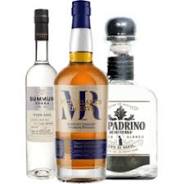Craft Beer Selection: Exploring the World of Artisanal Brews
In recent years, the craft beer movement has taken the world by storm, captivating beer enthusiasts with its diverse flavors, unique brewing techniques, and a passion for quality. Craft beer is not just a beverage; it’s an art form that celebrates creativity and innovation. From small independent breweries to experimental flavors, the craft beer industry offers an exciting and ever-expanding selection for those seeking a truly remarkable drinking experience.
One of the defining characteristics of craft beer is its emphasis on quality ingredients. Craft brewers carefully select their malt, hops, yeast, and other adjuncts to create distinct flavors that set their beers apart from mass-produced alternatives. Whether it’s a rich stout with notes of chocolate and coffee or a hop-forward IPA bursting with tropical fruit aromas, each craft beer boasts its own unique personality.
The beauty of exploring craft beer lies in the sheer variety available. Walk into any reputable craft beer bar or brewery taproom, and you’ll be greeted by an extensive selection that spans different styles, origins, and flavor profiles. From classic styles like pale ales and lagers to more adventurous brews like sour beers or barrel-aged concoctions, there is something to suit every palate.
Craft breweries often pride themselves on their commitment to experimentation and pushing boundaries. This spirit of innovation leads to exciting collaborations between brewers from different regions or even different industries altogether. It’s not uncommon to find limited-edition releases that feature unusual ingredients such as fruits, spices, or even aged in barrels previously used for aging spirits like bourbon or wine. These one-of-a-kind creations are sought after by enthusiasts who relish the opportunity to taste something truly unique.
Moreover, craft beer culture extends beyond just the liquid itself; it encompasses the stories behind each brewery and their dedication to their craft. Many craft breweries have deep roots within their local communities and prioritize sustainability practices in their operations. By supporting craft beer, consumers are not only indulging in a delicious beverage but also contributing to the growth of small businesses and sustainable practices.
Craft beer selection is not just about finding the perfect pint; it’s an adventure waiting to be explored. Whether you’re a seasoned beer connoisseur or new to the craft beer scene, there is always something new to discover. Local breweries, beer festivals, and knowledgeable bartenders are excellent resources for expanding your craft beer horizons.
So, next time you find yourself at a craft beer bar or perusing the shelves of your local bottle shop, take a moment to appreciate the craftsmanship behind each bottle. Embrace the opportunity to try something different, to support local artisans, and to savor the flavors that make craft beer so special. Raise your glass and toast to the ever-evolving world of craft beer – a world where passion and creativity flow freely.
Cheers!
7 Essential FAQs About Craft Beer Selection: Types, Differences, Choosing, Locating, Factors, Brands & Styles, and Buying
- What types of craft beer are available?
- What makes a craft beer different from regular beer?
- What is the best way to choose a craft beer?
- How can I find out what styles of craft beer are available in my area?
- What factors should I consider when selecting a craft beer?
- How can I find out more information about specific brands and styles of craft beers?
- Where can I buy quality craft beers at reasonable prices?
What types of craft beer are available?
The world of craft beer offers a wide range of styles and flavors to suit every taste. Here are some popular types of craft beer you might come across:
- Pale Ale: This is a hop-forward beer with a balanced malt profile, offering a refreshing and slightly bitter taste.
- India Pale Ale (IPA): Known for its strong hop character, IPAs can range from citrusy and floral to piney and resinous, with varying levels of bitterness.
- Stout: Dark and rich, stouts often feature roasted malt flavors with notes of chocolate, coffee, and sometimes even hints of vanilla or caramel.
- Porter: Similar to stouts, porters are dark beers but tend to have a slightly lighter body and less intense roasted flavors.
- Wheat Beer: These beers are brewed with a significant portion of wheat, resulting in a light and refreshing character with subtle fruity or spicy notes.
- Saison/Farmhouse Ale: Originally brewed in Belgium, saisons are often fruity, spicy, and slightly tart with a dry finish.
- Belgian Tripel: Strong and complex, tripels are known for their high alcohol content along with fruity esters and spicy phenols derived from Belgian yeast strains.
- Sour Beer: These beers have an intentionally tart or acidic taste due to the presence of specific bacteria or wild yeast during fermentation.
- Barrel-Aged Beer: Often stouts or strong ales aged in barrels previously used for aging spirits like bourbon or wine, barrel-aged beers develop unique flavors influenced by the wood and previous contents of the barrel.
- Fruit Beer: Brewed with the addition of fruits such as berries, citrus, or tropical fruits, these beers offer refreshing bursts of fruit flavor alongside traditional beer characteristics.
- Hefeweizen: A traditional German wheat beer known for its cloudy appearance, banana-like esters, clove-like phenols, and refreshing effervescence.
- Pilsner: A classic lager style, pilsners are crisp, clean, and golden in color with a balanced hop bitterness and a smooth finish.
These are just a few examples of the many craft beer styles available today. Craft brewers often experiment with blending styles or adding unique ingredients to create new and exciting flavors. Exploring the world of craft beer is an adventure that invites you to discover your personal favorites and expand your palate along the way.
What makes a craft beer different from regular beer?
Craft beer stands apart from regular beer in several key ways, setting it apart as a unique and distinct category within the brewing industry. Here are some factors that differentiate craft beer from its mass-produced counterparts:
- Independent and Small-Scale Production: Craft beer is typically produced by independent breweries that are smaller in scale compared to large commercial breweries. Craft brewers focus on quality over quantity, often taking a hands-on approach to brewing and maintaining a strong connection to their local communities.
- Emphasis on Quality Ingredients: Craft brewers prioritize using high-quality ingredients to create their beers. This includes carefully selecting malted grains, hops, yeast strains, and adjuncts to produce distinctive flavors and aromas. Craft brewers often experiment with different combinations of ingredients to create unique and innovative brews.
- Brewing Techniques: Craft brewers often employ traditional brewing techniques combined with modern innovations. They may experiment with barrel aging, souring processes, or blending different beer styles to create complex flavor profiles.
- Diverse Range of Styles: Craft beer offers a vast array of styles that go beyond the typical lagers and pilsners found in mass-produced beers. From hop-forward India Pale Ales (IPAs) to rich stouts, fruity sours, Belgian-inspired farmhouse ales, or experimental hybrids, craft breweries showcase an extensive range of flavors and styles for consumers to explore.
- Local Focus: Craft breweries tend to have strong ties to their local communities, reflecting the regional tastes and preferences in their beers. Many craft brewers source ingredients locally whenever possible and actively participate in community events or collaborate with other local businesses.
- Creativity and Innovation: The craft beer industry thrives on creativity and innovation. Brewers are constantly pushing boundaries by experimenting with new ingredients, brewing techniques, or collaborations with other breweries or artisans from different industries like coffee roasters or chocolatiers.
- Beer Culture and Education: Craft brewers often prioritize educating consumers about their beers. They may offer brewery tours, tasting events, or provide detailed information about the brewing process and beer styles to enhance the consumer’s appreciation and understanding of craft beer.
Overall, craft beer represents a departure from mass-produced beers by offering unique flavors, quality ingredients, and a strong connection to local communities. It celebrates the artistry of brewing and provides enthusiasts with an exciting and diverse drinking experience.
What is the best way to choose a craft beer?
Choosing a craft beer can be an exciting and enjoyable experience, as there are countless options to explore. Here are some tips to help you navigate the vast world of craft beer and find the perfect brew for your taste:
- Understand Different Beer Styles: Educate yourself about the various beer styles available. From hoppy IPAs to malty stouts, each style has its unique characteristics and flavor profiles. Researching different styles will give you a foundation to better understand what you might enjoy.
- Consider Your Preferences: Think about the flavors you typically enjoy in other beverages or foods. Do you prefer something light and refreshing or bold and full-bodied? Are you a fan of fruity or hoppy flavors? Knowing your preferences can guide you towards specific beer styles that align with your taste.
- Seek Recommendations: Don’t hesitate to ask for recommendations from knowledgeable sources such as bartenders, brewery staff, or friends who are craft beer enthusiasts. They can suggest beers based on your preferences or introduce you to new styles that you might enjoy.
- Start with Familiar Styles: If you’re new to craft beer, consider starting with more approachable styles like pale ales, wheat beers, or amber ales. These styles tend to have balanced flavors that are not too overpowering and can serve as a good introduction to the world of craft beer.
- Read Labels and Descriptions: Take the time to read labels and descriptions on bottles or menus. Craft breweries often provide information about the ingredients used, flavor notes, and even food pairings. This information can give you insights into what to expect from the beer.
- Experiment with Flights: Many craft beer bars offer flights – small sample-sized pours of multiple beers – which allow you to try different styles without committing to a full glass. Flights are an excellent way to explore various flavors in one sitting and help refine your palate.
- Attend Tastings or Beer Festivals: Attend beer tastings or festivals in your area. These events often feature a wide selection of craft beers, allowing you to sample different styles and engage with brewers who can provide insights into their creations.
- Keep a Tasting Journal: Consider keeping a journal to record your impressions of different beers. Note the style, brewery, flavor characteristics, and personal preferences. Over time, this journal can serve as a reference guide and help you remember the beers you enjoyed.
Remember, choosing a craft beer is subjective, and what works for one person may not work for another. The best way to find your favorites is through exploration and experimentation. Embrace the journey of discovering new flavors and styles, and most importantly, enjoy the experience!
How can I find out what styles of craft beer are available in my area?
Finding out what styles of craft beer are available in your area is an exciting endeavor that can lead to discovering new and unique brews. Here are a few ways you can explore the craft beer scene and find out what styles are being offered locally:
- Local Breweries: Start by researching and visiting local breweries in your area. Most breweries have taprooms where they showcase their latest creations. Visit their websites or social media pages to get an idea of the styles they specialize in or have on rotation. Many breweries also offer flights or tasting menus, allowing you to sample a variety of styles during your visit.
- Craft Beer Bars and Pubs: Check out craft beer bars and pubs in your area known for their extensive selection. These establishments often curate rotating taps featuring various craft beer styles from local, regional, and international breweries. Ask the bartenders for recommendations or inquire about any upcoming events or tap takeovers where specific styles may be highlighted.
- Beer Festivals: Keep an eye out for local beer festivals or events dedicated to craft beer. These gatherings often bring together numerous breweries, showcasing a wide range of beer styles under one roof. It’s a fantastic opportunity to taste different brews, interact with brewers, and learn more about specific styles.
- Online Craft Beer Directories: Utilize online craft beer directories like BeerAdvocate, Untappd, or RateBeer to search for local breweries and explore the beers they offer. These platforms allow you to filter by location, style, ratings, and user reviews, helping you discover new favorites.
- Local Bottle Shops: Visit specialty bottle shops that focus on craft beer selections. These stores often carry a diverse range of beers from local breweries as well as regional and international offerings. Speak with the staff who are usually knowledgeable about different styles and can provide recommendations based on your preferences.
- Social Media Groups and Forums: Join online communities dedicated to craft beer enthusiasts in your area. These groups often share information about new releases, local events, and breweries. Engaging with fellow beer lovers can give you insights into the latest styles trending in your region.
Remember, the craft beer scene is constantly evolving, with new styles and breweries emerging regularly. Exploring different sources and staying connected to the local craft beer community will help you stay informed about the exciting array of styles available in your area. So grab a pint, embark on your craft beer journey, and savor the diverse flavors crafted by passionate brewers near you!
What factors should I consider when selecting a craft beer?
When selecting a craft beer, there are several factors to consider that can enhance your overall enjoyment and help you find a beer that suits your preferences. Here are some key factors to keep in mind:
- Style: Craft beer comes in a wide range of styles, each with its own characteristics and flavor profiles. Consider the styles you typically enjoy or those you’d like to explore. Whether it’s a hoppy IPA, a rich stout, or a refreshing wheat beer, understanding the different styles can guide your selection.
- Flavor Profile: Think about the flavors you enjoy in beverages and foods. Craft beers offer an array of flavors, from malty sweetness to hop bitterness, fruity notes to roasted or chocolate undertones. Consider whether you prefer something crisp and refreshing or complex and full-bodied.
- ABV (Alcohol by Volume): Pay attention to the alcohol content of the beer you’re considering. Craft beers can vary widely in ABV, ranging from sessionable low-alcohol options to stronger brews with higher alcohol content. Decide if you’re looking for a lighter option or something with more potency.
- Hop Intensity: If you enjoy hop-forward beers with pronounced bitterness and floral or citrusy aromas, look for India Pale Ales (IPAs) or Double IPAs (DIPAs). On the other hand, if you prefer milder bitterness or want to explore other flavor profiles, consider styles like amber ales, brown ales, or Belgian-style beers.
- Seasonality: Some craft breweries release seasonal offerings that are tailored to specific times of the year. For example, lighter and fruit-infused beers might be more popular during summer months, while darker and spiced brews may be available during winter holidays. Taking seasonality into account can add an extra layer of enjoyment.
- Local Breweries: Support local craft breweries by exploring their offerings. Local breweries often have unique flavors and styles that reflect the tastes and ingredients of their region. Visiting a brewery or attending beer festivals can provide a more immersive experience and allow you to learn about the brewing process directly from the experts.
- Recommendations and Reviews: Seek recommendations from friends, beer enthusiasts, or trusted sources like beer rating websites or apps. Reading reviews can give you insights into a beer’s quality, flavor profile, and overall popularity.
Remember, selecting a craft beer is a personal experience, and what matters most is finding something that aligns with your preferences. Don’t be afraid to try new styles or experiment with different breweries. The joy of exploring craft beer lies in discovering new flavors and expanding your palate. Cheers to your craft beer journey!
How can I find out more information about specific brands and styles of craft beers?
If you’re looking to delve deeper into the world of craft beer and explore specific brands and styles, there are several avenues you can take to gather more information. Here are a few suggestions:
- Brewery Websites: Most craft breweries have their own websites where they provide detailed information about their beers, including descriptions, ingredients, brewing processes, and even the stories behind each brew. Visiting the brewery’s website is a great way to learn more about their offerings and get a sense of their brewing philosophy.
- Beer Review Websites: There are numerous online platforms dedicated to beer reviews and ratings. Websites like BeerAdvocate and RateBeer have extensive databases of craft beers, allowing you to search for specific brands or styles and read user-generated reviews. These platforms often provide detailed information about the beer’s flavor profile, aroma, appearance, and overall impression.
- Social Media: Many breweries maintain an active presence on social media platforms such as Instagram, Facebook, and Twitter. Following your favorite breweries or craft beer enthusiasts on these platforms can give you access to up-to-date information about new releases, collaborations, events, and other exciting news within the craft beer community.
- Beer Festivals and Tastings: Attending local beer festivals or brewery-hosted tastings can be an immersive experience that allows you to sample a wide range of craft beers firsthand. Brewers often attend these events themselves, providing an opportunity to engage with them directly and learn more about their beers.
- Craft Beer Books: There is a wealth of literature available that delves into the world of craft beer. Books written by industry experts cover topics such as brewing techniques, beer styles, tasting notes, and historical context. Exploring these books can deepen your knowledge and appreciation for different brands and styles.
- Joining Beer Clubs or Subscriptions: Some establishments offer beer clubs or subscription services that deliver curated selections of craft beers directly to your doorstep on a regular basis. These services often provide detailed information about the beers included in each shipment, allowing you to learn about different brands and styles as you taste your way through the selection.
Remember, the craft beer world is vast and ever-evolving, so don’t hesitate to explore and try new things. Whether it’s through online resources, direct interactions with brewers, or attending events, there are countless opportunities to expand your knowledge and discover a world of flavors within craft beer.
Where can I buy quality craft beers at reasonable prices?
Finding quality craft beers at reasonable prices can be an exciting endeavor. Here are some places where you can often discover great deals on craft beer:
- Local Breweries: Visit your nearby craft breweries and taprooms. Many offer their beers for purchase directly from the source, often at competitive prices. You may also have the chance to try limited releases or brewery-exclusive brews.
- Independent Bottle Shops: Seek out independent retailers specializing in craft beer. These stores often have a wide selection of local, regional, and international craft beers at varying price points. The staff is usually knowledgeable and can guide you toward excellent options within your budget.
- Online Retailers: Numerous online platforms specialize in delivering craft beer straight to your doorstep. Websites like CraftShack, Tavour, and Beer Drop offer an extensive selection of beers from various breweries across the country, with regular discounts and promotions.
- Beer Subscription Services: Consider subscribing to a beer club or subscription service that curates a selection of craft beers for you on a regular basis. Companies like Beer of the Month Club or Tavour offer monthly shipments featuring different breweries and styles, often at competitive prices.
- Grocery Stores: Many well-stocked grocery stores now carry a respectable range of craft beers. Keep an eye out for dedicated sections or end-of-aisle displays that feature local or limited-release brews at affordable prices.
- Local Beer Festivals: Attend local beer festivals or events where breweries showcase their offerings. These gatherings often provide an opportunity to sample a wide range of craft beers while supporting local brewers who may offer special festival pricing.
- Social Media Groups: Join online communities focused on craft beer enthusiasts in your area or region. Members often share information about new releases, deals, and where to find quality brews at reasonable prices.
Remember that availability and pricing may vary depending on your location and the specific market conditions in your area. Exploring different sources and staying connected with the craft beer community will increase your chances of finding quality brews at affordable prices. Cheers to your craft beer adventures!







